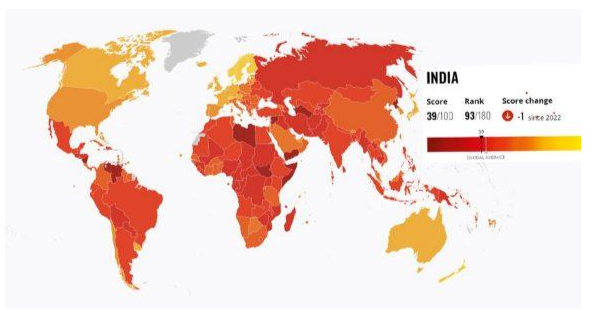Friday, 2nd February 2024
Daily News Paper Snippets - 02nd February 2024
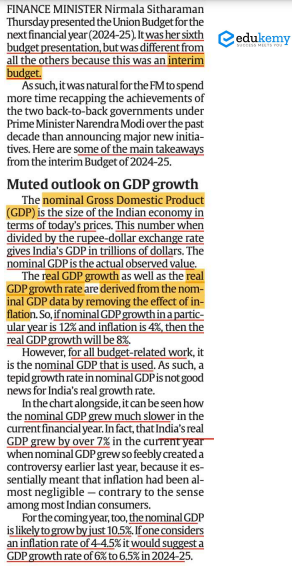
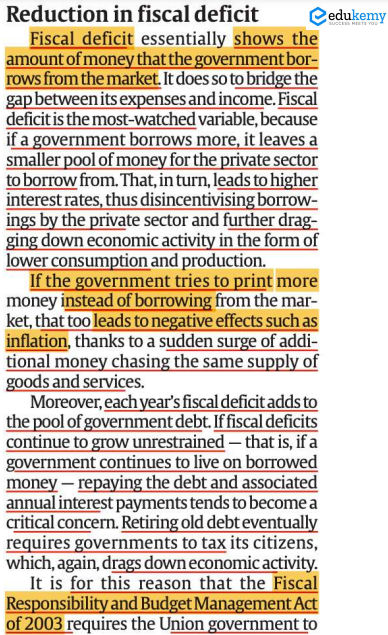
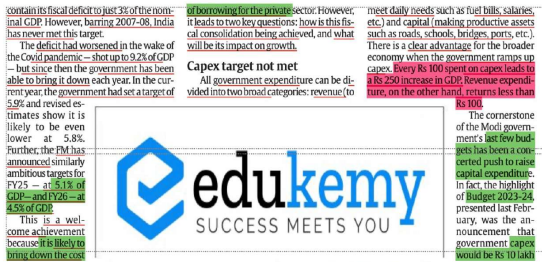
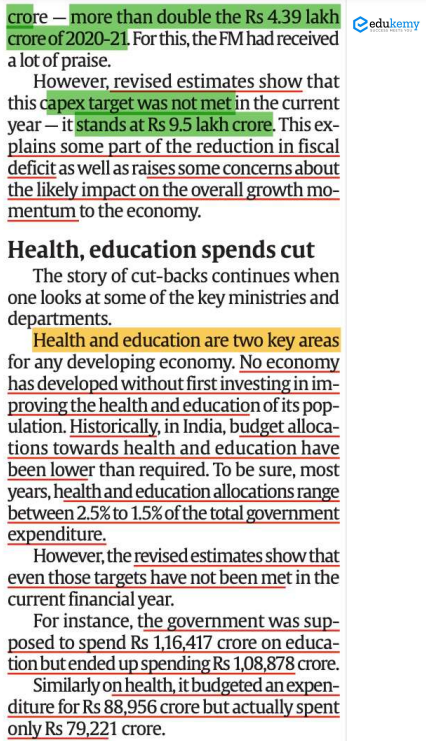
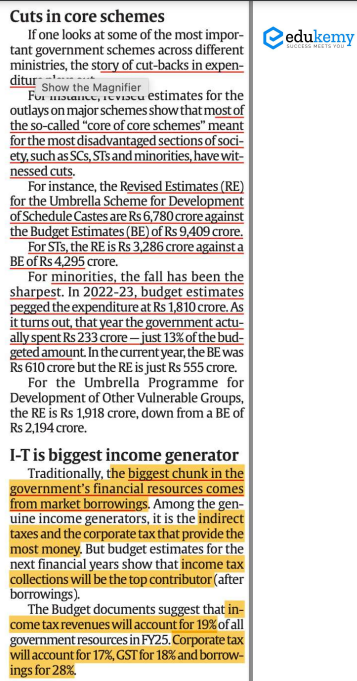
Free Movement Regime
In News: The ongoing discussions in the northeastern states have been sparked by India's recent initiatives to reevaluate the Free Movement Regime (FMR) agreement with Myanmar.
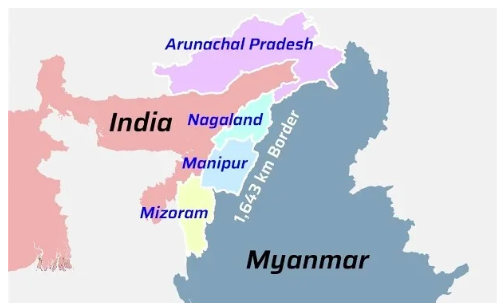
Free Movement Regime (FMR)
- Historical Context
- Origins of Boundary
- The Treaty of Yandaboo in 1826 defined the India-Myanmar boundary, separating communities with shared ethnicity and culture.
- Impact of Treaty
- The border created divisions among communities like the Nagas, Kuki-Chin-Mizo, disrupting their shared heritage without consensus.
- Origins of Boundary
- Establishment of FMR
- Act East Policy
- In 2018, India introduced the FMR as part of the Act East policy, allowing visa-free cross-border movement up to 16 km.
- Border Pass Requirement
- Residents require a one-year border pass for stays up to two weeks, aiming to enhance local trade, education, healthcare, and diplomatic ties.
- Act East Policy
- Considerations for Revisiting FMR
- Security Concerns
- Illegal Infiltration
- Apprehensions about the influx of Chin, Naga, and Rohingya communities, impacting local demographics and resources.
- Illegal Infiltration
- Trafficking and Smuggling
- Porous borders facilitate drug and arms movement, posing internal security threats.
- Insurgency Activities
- FMR misuse by groups like Kuki National Organisation and Kangleipak Communist Party-Lamphel in Manipur.
- Security Concerns
- Socio-economic and Regional Issues
- Cultural Identity Impact
- Migration raises concerns about preserving indigenous cultures.
- Environmental Consequences
- Unregulated cross-border movement contributes to deforestation and resource extraction.
- Regional Dynamics
- China's influence in Myanmar adds complexity to border security.
- Cultural Identity Impact
Major Aspects of India-Myanmar Relations
- Historical and Cultural Ties
- Deep Roots
- Centuries-old ties with shared cultural and religious connections, rooted in Buddhism.
- Treaty of Friendship
- The 1951 treaty forms the basis for diplomatic relations.
- Deep Roots
- Economic Cooperation
- Trade and Investment
- India ranks as Myanmar's 4th largest trading partner and a significant source of investment.
- Joint Projects
- Involvement in projects like the Kaladan Multimodal Transit Transport Project and the Trilateral Highway Project.
- Trade and Investment
- Disaster Relief
- Prompt Assistance
- India's swift response to natural calamities in Myanmar, demonstrating solidarity during events like Cyclone Mora and the Shan State earthquake.
- Prompt Assistance
Way Forward
- Focus on Shared Interests
- Economic Cooperation
- Expanding collaboration in infrastructure, energy, and trade for mutual benefit.
- Cultural Exchanges
- Encouraging exchanges and religious tourism to build trust and understanding.
- Economic Cooperation
- Comprehensive Border Management
- Balanced Approach
- Developing a comprehensive strategy for border management, addressing security concerns while facilitating legitimate activities.
- Balanced Approach
- Supporting Democratic Transition
- Long-term Goal
- India's engagement in Myanmar should aim to support a peaceful transition to democracy, aligning with the vision for regional stability and prosperity.
|
UPSC Previous Year Questions Prelims (2008) Q. Department of Border Management is a Department of which one of the following Union Ministries? (a) Ministry of Defence Ans: (b) Mains (2021) Q1: Analyze the multidimensional challenges posed by external state and non-state actors, to the internal security of India. Also discuss measures required to be taken to combat these threats. Mains (2020) Q2: For effective border area management, discuss the steps required to be taken to deny local support to militants and also suggest ways to manage favourable perception among locals. Mains (2016) Q3: Border management is a complex task due to difficult terrain and hostile relations with some countries. Elucidate the challenges and strategies for effective border management. |
Source: TH
Regulatory Measures by RBI Against Paytm
In News: From March 2024 onwards, Paytm Payments Bank Ltd has been prohibited by the Reserve Bank of India from receiving new deposits and conducting credit transactions.

Payments Bank
- Background
- Formation Based on Recommendations
- In 2014, the Reserve Bank of India (RBI) established Payments Bank following the suggestions of the Nachiket Mor Committee.
- Scale and Risk Focus
- Designed to operate on a smaller scale with minimal credit risk.
- Objectives
- Financial Inclusion
- Primary objective is to promote financial inclusion by providing banking and financial services to unbanked and under-banked areas.
- Targeted Beneficiaries
- Aimed at assisting the migrant labor force, low-income households, small entrepreneurs, etc.
- Payments Bank in India
- Currently, India has six Payment Banks: Airtel Payment Bank, India Post Payment Bank, Fino, Paytm Payment Bank, NSDL Payment Bank, and Jio Payment Bank.
- Features
- Differentiated and not universal banks, operating on a smaller scale.
- Minimum paid-up capital requirement of Rs. 100,00,00,000.
- Promoters must contribute a minimum of 40% to the paid-up equity capital for the first five years.
- Activities Allowed
- Cannot accept more than ₹2 lakh in deposits per account.
- Not permitted to lend directly but can sell loan products and promote third-party loan products.
- Authorized for personal payments and cross-border remittances on current accounts.
- Issuance of debit cards is allowed.
RBI Action Against Paytm
- RBI Directive
- Ceasing Key Services
- Paytm Payments Bank directed to stop accepting money in any customer account, including wallets and prepaid instruments, from March 1.
- Reason for Action
- RBI cites persistent non-compliance and ongoing supervisory concerns as reasons for the intervention.
- Key Points of RBI Direction
- Barred Paytm from accepting deposits or top-ups after February 29.
- Nodal accounts of parent company One97 Communications and Paytm Payments Services to be terminated by February 29.
- Settlement of pipeline transactions and nodal accounts initiated on or before February 29 to be completed by March 15.
- Customer Implications
- Withdrawal Freedom
- Customers allowed to freely withdraw or use funds in their Paytm accounts, including savings and current accounts, prepaid instruments, etc., within available balances.
- Reasons Behind RBI Action
- Historical Scrutiny
- Paytm Payments Bank under RBI scrutiny since 2018.
- Unspecified Concerns
- While exact reasons not specified, potential issues related to KYC compliance and IT-related matters.
- Data Security Concerns
- RBI wary of depositors' money exposure to risks and identified lapses in information protection within the One97 Communications group.
Source: IE
Acid Rain
In News: Arising from fossil fuels, Acid Rain stands as a multifaceted environmental concern, characterized by numerous causes and far-reaching consequences.
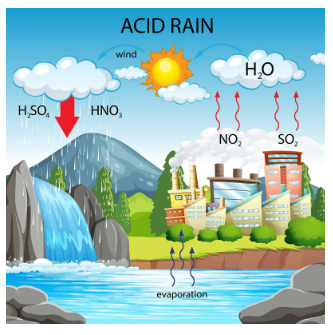
Acid Rain
- Definition
- Acid Rain Overview: Acid rain, or acid deposition, encompasses any form of precipitation containing acidic components, like sulfuric or nitric acid, that descends to the ground in wet or dry forms.
- Variety of Forms: It includes rain, snow, fog, hail, and even acidic dust.
- Formation of Acid Rain
- Chemical Processes: Sulphur Dioxide (SO2) and Nitrogen Oxide (NOx) combine with water and oxygen in the atmosphere, forming sulfuric acid (H2SO4) and nitric acid (HNO3), respectively.
- Dissolution in Water: These acids dissolve in water droplets, giving rise to acid rain, snow, or fog.
- Acidic pH: The typical pH of acid rain ranges from 4.2-4.4, making it more acidic than regular rain with a pH of approximately 5.6.
- Causes of Acid Rain
- Fossil Fuel Combustion: Burning sulfur-containing fossil fuels releases sulfur dioxide (SO2), while higher-temperature combustion results in nitrogen oxides (NOx).
- Prevalence in Vehicles: Common in vehicles like automobiles and prevalent in industrial processes and power plants burning coal.
- Natural Sources: Volcanic eruptions and lightning contribute to sulfur dioxide and nitrogen oxides in the atmosphere.
- Forms of Acid Rain/Deposition
- Wet Deposition: Acidic acids from the atmosphere mix with rain, snow, fog, or hail and fall to the ground.
- Dry Deposition: Acidic particles and gases deposit without moisture, posing threats to various surfaces, including water bodies, vegetation, and buildings.
Impacts of Acid Rain
- Impact on Aquatic Life
- Disruption of Reproduction: Acid rain makes water bodies inhospitable, disrupting reproductive patterns of aquatic life such as trout and fish.
- Population Decline: Fish population decline is observed in affected rivers and lakes.
- Impacts on Marine Water and Species Distribution
- Altered pH: Increased acidity adversely affects marine environments, impacting the distribution and survival of organisms.
- Challenges for Shell-forming Species: Shell-forming marine species face challenges in building and maintaining protective shells.
- Impacts on Physical Infrastructure
- Threats to Monuments
- Acid rain poses substantial threats to structures, causing deterioration and discoloration.
- Taj Mahal Example
- Iconic structures like the Taj Mahal exhibit degradation due to sulfuric acid reactions.
Acid Rain Mitigation Measures
- Technological Solutions
- Flue-Gas Desulphurisation
- Coal power plants employ technologies like flue-gas desulphurisation to significantly reduce sulfur dioxide emissions.
- Regulatory Measures
- Graded Response Action Plan (GRAP)
- Emergency measures implemented to prevent air quality deterioration in Delhi-NCR region.
- Emissions Regulations
- Introduction of BS-VI vehicles and establishment of a new commission for air quality management.
- International Cooperation
- EANET Initiative
- Governments collaborate globally, exemplified by the Acid Deposition Monitoring Network in East Asia (EANET).
- Data Collection
- EANET collects data on acid substance deposition and its environmental impact.
Way Forward
- Sustainable Practices: Implementing sustainable practices and promoting renewable energy sources.
- Stringent Regulations: Enforcing stringent emissions regulations to combat environmental challenges.
- International Collaboration: Fostering international cooperation and investing in innovative technologies for climate change mitigation.
|
UPSC Previous Year Questions Prelims () Q. Why is there a concern about copper smelting plants?
Select the correct answer using the code given below. (a) 1 and 2 only Ans: (b) Exp:
Q2. With reference to furnace oil, consider the following statements:
Which of the statements given above are correct? (a) 1 and 2 only Ans: (d) Exp:
Mains (2021) Q1. Describe the key points of the revised Global Air Quality Guidelines (AQGs) recently released by the World Health Organisation (WHO). How are these different from its last update in 2005? What changes in India’s National Clean Air Programme are required to achieve revised standards? Mains (2014) Q2. Environmental Impact Assessment studies are increasingly undertaken before a project is cleared by the Government. Discuss the environmental impacts of coal-fired thermal plants located at coal pitheads. |
Source: TH
Minimal Radioactive Discharges from Indian Nuclear Plants
In News: In a recent analysis, researchers from the Bhabha Atomic Research Centre (BARC) have determined that the radioactive discharges originating from Indian nuclear plants have been minimal.
Key Findings of the Analysis
- Minimal Environmental Impact
- Limited Impact: Radioactive discharges from nuclear plants were observed to have minimal impact on the environment.
- Insignificant Values: Concentrations of fission products beyond a 5 km radius were below detectable levels, indicating their insignificance.
- Types of Radioactive Discharges
- Gaseous and Liquid Waste: Atmospheric releases include noble gases, Argon-41, radioiodine, and particulate radionuclides.
- Liquid Discharge: Consists of fission product radionuclides, radioiodine, tritium, strontium-90, caesium-137, and cobalt-60.
- Regulatory Adherence: Discharges follow strict radiological and environmental regulatory regimes.
- Air Particulates
- Alpha Activity Levels: Average gross alpha activity in air particulates at nuclear plants was consistently below 0.1 mBq per cubic meter.
- Exception at Narora: Narora Atomic Power Station showed higher values due to increased atmospheric dust load.
- Specific Marker Concentrations
- Low Concentrations: Average concentrations of radionuclides in air particulates, including iodine-131, caesium-137, and strontium-90, were below 1 mBq per cubic meter.
- Water Bodies: Concentrations of caesium-137 and strontium-90 in nearby rivers, lakes, and sea water remained below specified levels.
- Sediment Concentrations
- Within Variation: Concentrations of caesium-137 and strontium-90 in sediments showed no trend of deposition or accumulation, staying within natural variations.
- Statistical Consistency: Levels observed aligned with statistical variations in natural sediments.
- Tritium Detection
- Detectable Levels: Tritium was detectable at all sites, except at Kudankulam Nuclear Power Station.
- Higher Concentrations: Rajasthan Atomic Power Station exhibited relatively higher tritium concentrations.
Significance of the Findings
- Reinforcing India's Commitment: Findings hold potential significance in reinforcing India's commitment to a safe nuclear power program.
- Safe Operation: Minimal public doses emphasize the safe operation of Indian nuclear power plants.
Implications of Radioactive Discharge
- Environmental Impact
- Ecosystem Effects: Radioactive substances can impact ecosystems, with potential effects on plants, animals, and microorganisms.
- Contamination Risks: Soil and sediment can face contamination, affecting water bodies and posing risks to aquatic life.
- Human Health Concerns
- Radiation Exposure: Nearby populations may face ionizing radiation exposure, with potential health risks, including cancer.
- Internal Exposure: Inhaling or ingesting radioactive particles can lead to internal exposure, as witnessed in the Chernobyl disaster.
- Long-term Health Risks
- Cancer Risk: Exposure to certain radioactive substances increases the risk of cancer, particularly with prolonged exposure.
- Genetic Mutations: Ionizing radiation may cause genetic mutations, raising the risk of hereditary disorders.
- Agriculture and Food Chain
- Contamination Risks: If radioactive substances enter the food chain, agricultural products and livestock may become contaminated.
- Fukushima Example: The 2011 Fukushima Nuclear Disaster raised concerns about radiation-contaminated agricultural products.
- Economic Consequences
- Property Value Decline: Areas near nuclear facilities may experience a decline in property values due to safety concerns.
- Industry Reputation: Repeated incidents can harm the reputation of the nuclear industry, impacting investment and development.
Initiatives Related to Safe Radioactive Discharge
- International Conventions & Agreements
- Early Notification Treaty: Convention on Early Notification of a Nuclear Accident obliges countries to promptly inform about nuclear accidents.
- Spent Fuel Management Treaty: Joint Convention on the Safety of Spent Fuel Management and on the Safety of Radioactive Waste Management addresses global radioactive waste management.
- Convention on Nuclear Safety (CNS)
- Binding Safety Treaty: CNS, adopted in 1994, ensures nuclear power plant safety and establishes regulatory frameworks.
- EU Directives on Radioactive Waste
- EU Regulations: European Union's directives mandate national policies for managing radioactive waste and spent fuel.
India’s Initiatives
- Atomic Energy Regulatory Board (AERB)
- Regulatory Oversight: AERB ensures nuclear and radiation safety, establishing and enforcing regulations for safe nuclear facility operation.
- Environmental Impact Assessment (EIA)
- Pre-approval Assessments: Rigorous environmental impact assessments for nuclear projects, evaluating potential impacts, including radioactive discharges.
- Effluent Treatment and Dilution
- Waste Management: Nuclear facilities employ effluent treatment to manage liquid radioactive waste before discharge, using dilution and dispersion techniques.
|
UPSC Previous Year Questions Prelims (2012) Q. To meet its rapidly growing energy demand, some opine that India should pursue research and development on thorium as the future fuel of nuclear energy. In this text, what advantage does thorium hold over uranium?
Which of the statements given above is/are correct? (a) 1 only Ans: (d) Prelims (2009) Q. Which among the following has the world’s largest reserves of Uranium? (a) Australia Ans: (a) |
Source: TH
Black-crowned Night Heron
In News: A juvenile black-crowned night heron, identified by its ring, arrived at a nearby pond in Imphal, but unfortunately, it succumbed to its condition.

Black-crowned Night Heron
- Physical Characteristics
- Medium-sized heron with a sturdy build.
- Scientific Name: Nycticorax nycticorax.
- Distribution
- Found across North America, with localized presence in Central America and the Caribbean.
- Habitat
- Primarily associated with large wetlands.
- Inhabits diverse wetland environments, including swamps, streams, rivers, marshes, mud flats, and lakeshores.
- Distinctive Features
- Stocky body, short neck, and legs.
- Black crown, gray body, and striking red eyes.
- Weight: 727 to 1014 grams.
- Wingspan: 115 to 118 centimeters.
- Length: 58 to 66 centimeters.
- Females and males exhibit similar appearances, with females slightly smaller.
- Social Behavior
- Displays social behavior throughout the year.
- Often associates with other heron species.
- Migratory Patterns
- Classified as a migrating species.
- Diet
- Opportunistic feeder with a primary diet of fish.
- Supplementary diet includes leeches, earthworms, and various aquatic and terrestrial insects.
- Conservation Status
- IUCN Red List: Least Concern.
Source: WIKI
Green Roofs
In News: Recent research indicates that green roofs treated with mycorrhizal fungi promote a more varied soil community, enhancing the likelihood of sustaining green roofs in the long term.
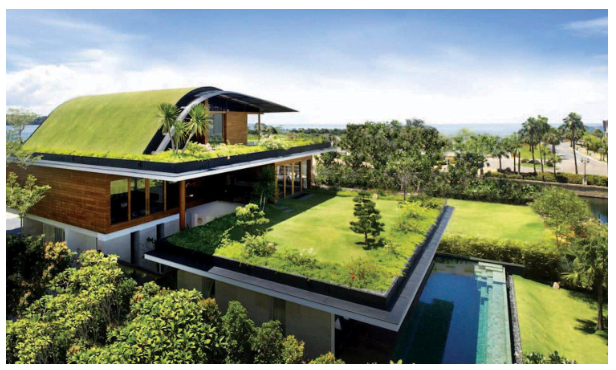
Green Roofs
- Introduction
- Green roofs, also known as 'vegetated roofs' or 'living roofs,' are roof structures featuring a waterproofing membrane, growing medium (soil), and vegetation (plants).
- Essential components include drainage, stormwater management, and a waterproof membrane for protection.
- Types of Green Roofs
- Intensive Green Roofs
- Resemble elevated parks with complex structural support.
- Accommodate shrubs, trees, walkways, and benches.
- Include irrigation, drainage, and root protection layers.
- Extensive Green Roofs
- Lightweight roofs supporting native ground cover.
- Require minimal maintenance.
- Primarily serve environmental benefits without functioning as accessible gardens.
Benefits of Green Roofs
- Longer lifespan compared to conventional roofs.
- Natural insulation reduces energy costs.
- Creates peaceful retreats for people and animals.
- Absorbs stormwater, potentially reducing the need for elaborate drainage systems.
- Improves air quality and mitigates the Urban Heat Island Effect on a broader scale.
Key Facts about Fungi
- Introduction
- Fungi belong to one of the six biological kingdoms, along with Animalia, Plantae, Protista, Archaea/Archaebacteria, and Bacteria/Eubacteria.
- Eukaryotic organisms with membrane-bound organelles and clearly defined nuclei.
- Reproduction and Distribution
- Reproduce both sexually and asexually.
- Terrestrial or aquatic, with some species found in Arctic and Antarctic regions.
- Thrive in temperate and tropical regions with sufficient moisture.
- Importance of Fungi
- Decompose dead organic material, contributing to nutrient cycling in ecosystems.
- Serve as food sources, particularly in the form of mushrooms.
- Facilitate fermentation in the production of various food items.
- Yield secondary metabolites, including antibiotics and anticoagulants, with medicinal applications.
Source: GR
Martand Sun Temple
In News: Recently, individuals associated with an obscure Hindutva group unlawfully entered the Martand Sun Temple, which is under the protection of the Archaeological Survey of India (ASI).
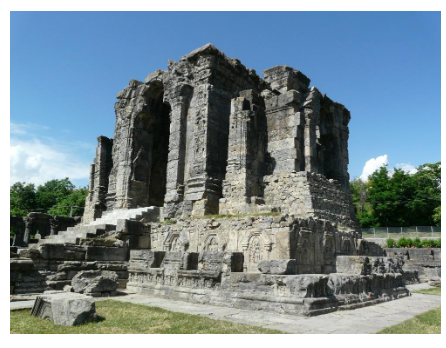
Martand Sun Temple
- Location and Dedication
- Hindu temple situated near Anantnag in the Kashmir Valley of Jammu and Kashmir.
- Devoted to the Sun God, with "Martand" being a Sanskrit synonym for Surya.
- *Historical Background
- Constructed by King Lalitaditya Muktapida during the 8th Century CE.
- King Lalitaditya Muktapida was the third ruler of the Karkota Dynasty.
Features of Martand Sun Temple
- Architectural Fusion
- Unique blend of local Kashmiri style with influences from Gupta, Chinese, Gandhara, Roman, and Greek architectures.
- Construction and Layout
- Built entirely from stone on a plateau.
- Spans 32,000 square feet with a large courtyard featuring 86 fluted columns.
- Main shrine strategically positioned to receive direct sunlight, especially during sunrise and sunset.
- Main Shrine (Vimana)
- Stands at around 60 feet.
- Intricate carvings depict various Hindu deities.
- Central shrine designed to capture sunlight on the installed idol.
- Additional Shrines
- 84 smaller shrines surround the main Sun Temple.
- Aligned along the complex's perimeter.
- Demolition History
- Believed to have been demolished by Sultan Sikandar Shah Miri, who ruled Kashmir from 1389 to 1413.
Source: NH
Payments Bank
In News: Following a system audit report and subsequent compliance validation report by external auditors, the Reserve Bank of India (RBI) recently imposed restrictions on Paytm Payments Bank Ltd (PPBL).
Payments Bank Overview
- Definition
- A payments bank, operating on a smaller scale, functions similarly to a regular bank but avoids credit risk.
- Established based on the recommendations of the Nachiket Mor Committee.
- Objectives
- Aimed at advancing financial inclusion by providing banking services to unbanked and underbanked areas, catering to migrant labor, low-income households, small entrepreneurs, etc.
- Registered as a public limited company under the Companies Act 2013 and licensed under Section 22 of the Banking Regulation Act 1949.
- Regulation and Governance
- Governed by various legislations, including the Banking Regulation Act, 1949; RBI Act, 1934; Foreign Exchange Management Act, 1999, etc.
Distinctive Features
- Differentiation
- Payments banks are distinct from universal banks.
- Scale of Operations
- Operate on a smaller scale.
- Capital Requirements
- Minimum paid-up equity capital for payments banks is Rs. 100 crores.
- Promoter's initial contribution to the payment bank's equity capital must be at least 40% for the first five years.
Permissible Activities
- Deposit Handling
- Accept deposits up to Rs. 2,00,000, including demand deposits in the form of savings and current accounts.
- Investments
- Invest deposits in secure government securities as Statutory Liquidity Ratio (SLR), constituting 75% of the demand deposit balance.
- Place the remaining 25% as time deposits with other scheduled commercial banks.
- Services Offered
- Provide remittance services, mobile payments/transfers/purchases, and other banking services like ATM/debit cards, net banking, and third-party fund transfers.
- Can act as a banking correspondent (BC) for another bank for credit and services it cannot offer.
Restrictions on Activities
- Loan Issuance
- Cannot issue loans and credit cards.
- Deposit Restrictions
- Cannot accept time deposits or NRI deposits.
- Non-Banking Activities
- Prohibited from establishing subsidiaries for non-banking financial activities.
Source: LM
Volt Typhoon
In News: The U.S. government has recently taken action to dismantle a significant hacking group known as "Volt Typhoon," backed by China.
About Volt Typhoon
- Origin and Activity
- Volt Typhoon is a state-sponsored hacking group believed to be based in China, exhibiting active cyber operations since at least 2021.
- The group primarily engages in espionage and information gathering activities.
- Targets
- Volt Typhoon has shown a specific interest in critical infrastructure organizations within the United States, with a focus on locations such as Guam.
- Stealth Emphasis
- The threat actor places a strong emphasis on stealth throughout its operations.
- Living-off-the-land techniques and hands-on-keyboard activity are central to Volt Typhoon's modus operandi.
- Initial Access Strategy
- The group typically gains initial access through the exploitation of public-facing devices or services.
- Tool Usage
- Volt Typhoon utilizes a relatively uncommon practice of relying on preinstalled utilities for the majority of their interactions with victims.
- Compromised Devices
- Small office/home office (SOHO) devices are compromised and used as proxies for communication with affected networks.
- Attack Pattern
- The attack pattern of Volt Typhoon involves a sequence of actions, starting with collecting data, including credentials from both local and network systems.
- Data Staging
- Stolen data is then organized into an archive file, staging it for subsequent exfiltration.
- Persistence
- The threat actor employs stolen valid credentials to maintain persistence within the compromised networks.
- Traffic Concealment
- Volt Typhoon operates discreetly by routing its traffic through compromised network equipment, such as home routers.
- The group takes care to thoroughly remove evidence of intrusions from victim logs, making detection challenging.
- Detection Challenges
- The combination of tactics, including the use of preinstalled utilities and routing through hacked network equipment, makes distinguishing between legitimate activities and attacker actions especially difficult for defenders.
Source: CNBC
Auroville Exposure Tour
In News: As a component of the Ek Bharat Shreshtha Bharat (EBSB) initiative, students engaged in a firsthand experience of sustainable living during the Auroville Exposure Tour.
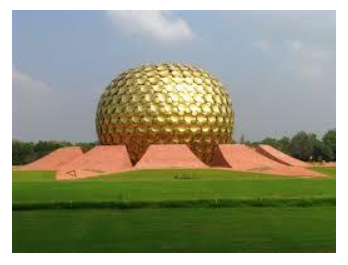
About Auroville
- Auroville's Universal Township
- Auroville is a developing universal township intended to accommodate a population of up to 50,000 individuals from diverse backgrounds worldwide.
- Geographical Location
- Situated in the Viluppuram district of Tamil Nadu, Auroville extends into some parts of Puducherry.
- Founding and Vision
- Founded in 1968 by Mirra Alfassa, Auroville aims to actualize Sri Aurobindo's vision for innovative forms of both individual and collective life.
- UNESCO Endorsement
- Officially endorsed by UNESCO in 1966, Auroville is recognized for its commitment to sustainable living and its dedication to addressing future cultural, environmental, social, and spiritual needs of humanity.
Source: PIB
Fiscal Strategies for Economic Resilience
In News: Despite uncertainties on the global front, India stands out as the fastest-growing major economy, demonstrating stability in key economic indicators such as the current account deficit, currency, and inflation.
Current Status of India’s Growth Trajectory
- Government's Investment Strategy
- Investment has surpassed GDP growth, reaching 34.9% this year.
- There is a call for the government to moderate budgetary support to capital spending for achieving the targeted fiscal deficit of 4.5% of GDP by 2025-26.
- Fiscal Consolidation in Election Year
- Achieving fiscal consolidation in an election year is crucial.
- The Ministry of Finance expects close to 7% growth next fiscal, envisioning India becoming a $7 trillion economy by the end of the decade.
- Healthy Medium-Term Forecasts
- Multilateral agencies forecast moderate GDP growth of 6.4% next fiscal.
- Slower global growth and tighter financial conditions globally and domestically contribute to this moderation.
- Inflationary Concerns
- Core inflation in India has corrected quickly to 3.8%, and fuel inflation is at -1%.
- High food inflation, linked to the underperformance of agriculture and the rural economy, remains a concern.
- Climate Change and Economic Impacts
- 2023 marked the highest annual temperature, emphasizing escalating climate risk.
- The Ministry of Finance stresses the need for research, development, and measures to adapt to climate change without compromising economic growth.
- Monsoon
- Overall rainfall was 6% below expectations during the monsoon season.
- The SBI Monsoon Impact Index indicates improved agricultural productivity.
- Continuous Thrust on Capital Expenditure
- Capital expenditure during the first five months of 2023 was robust.
- New company registrations increased, reflecting strong growth intentions.
- Reclassified India's Exchange Rate Regime
- The IMF classifies India's exchange rate regime as a "stabilized arrangement," indicating a shift in perception.
- This classification contrasts a fixed exchange rate with a floating system.
- Declining Current Account Deficit (CAD)
- India’s CAD declined to 1% of GDP in the second quarter of 2023.
- The CAD decrease is attributed to improved numbers according to RBI data.
Major Challenges for the Indian Economy in 2024
- Global Economic Integration
- Rising geopolitical events pose a threat to India's growth.
- Geoeconomic fragmentation and a slowdown in hyper-globalization impact global trade.
- Energy Security vs Transition
- A complex trade-off exists between energy security and the ongoing energy transition.
- Policy actions for energy goals can have spillover effects on other economies.
- Artificial Intelligence (AI) Challenges
- The rise of AI poses challenges, especially in the services sector.
- The benefits of complementarity and risks of displacement are highlighted.
- Rising Inflation
- The impact of rising inflation on the broader economy is a major challenge.
- Inflation affects growth by changing labor supply and demand.
- Requirement of Skilled Workforce
- Ensuring a talented and appropriately skilled workforce is a policy priority.
- Despite an increase in employable percentages, more needs to be done.
- Geopolitical Tensions
- Geopolitical tensions, including events in the Red Sea, impact exports.
- Estimates suggest lower exports due to the crisis in the Red Sea.
Reforms Required for Robust Economic Growth in 2024
- Moving Towards Fiscal Consolidation
- Government debt to GDP ratio and interest payments necessitate fiscal consolidation.
- Robust direct tax collections and higher dividend transfers are crucial.
- Continuing Focus on Capital Expenditure (Capex)
- Capex's strong multiplier effect on growth demands continued focus.
- Government capex to GDP ratio is expected to increase in 2023-24.
- Need to Spur Consumption
- Consumption growth needs a boost, especially in the lower-income category.
- Measures to spur consumption demand are essential for economic revival.
- Increased Spending on Human Capital
- Investment in health, education, and skilling is crucial for the demographic dividend.
- Higher expenditure on human capital is needed for meaningful employment.
- Focus on Agriculture and the Rural Sector
- Improving productivity in the agriculture sector is vital for rural incomes.
- Adoption of technology and rural infrastructure development are essential.
- Focus on Contemporary Issues
- Enabling a business-friendly environment, addressing environmental concerns, and uplifting marginalized sections require focus.
- Emphasis on equitable, sustainable, and green growth is crucial.
Conclusion
- The first advance GDP estimates project robust growth in the Indian economy, exceeding earlier predictions.
- Government fiscal policies transitioning from pandemic-focused welfare to public investment have enhanced economic capacity.
- However, challenges such as managing food inflation, adapting to climate change, and maintaining macroeconomic fundamentals need attention for sustained growth.
- Policymakers face a challenging yet imperative task in steering the economy toward stability and prosperity.
|
UPSC Previous Year Questions Prelims (2018) Q. Consider the following statements:
Which of the statements given above is/are correct? (a) 1 only Ans: (c) Mains (2019) Q.1 Public expenditure management is a challenge to the Government of India in the context of budget-making during the post-liberalization period. Clarify it. Mains (2014) Q.2 Normally countries shift from agriculture to industry and then later to services, but India shifted directly from agriculture to services. What are the reasons for the huge growth of services vis-a-vis the industry in the country? Can India become a developed country without a strong industrial base? |
Source: IE
VIDYADAAN CAMPAIGN - Case Study of the Day
The Bahraich Aspirational District has innovatively enhanced primary education by engaging individuals from various fields to interact with over 400 Government Primary Schools' children.
- A diverse group, including intellectuals, government officials, retired employees, teachers, educated housewives, and youngsters, actively participates in this weekly campaign, spending at least an hour with the kids.
- The initiative has yielded highly positive results, with volunteers dedicating their time to teach the children.
- This platform for young minds to interact with intellectuals not only facilitates academic learning but also imparts valuable values and ethics from an early age.

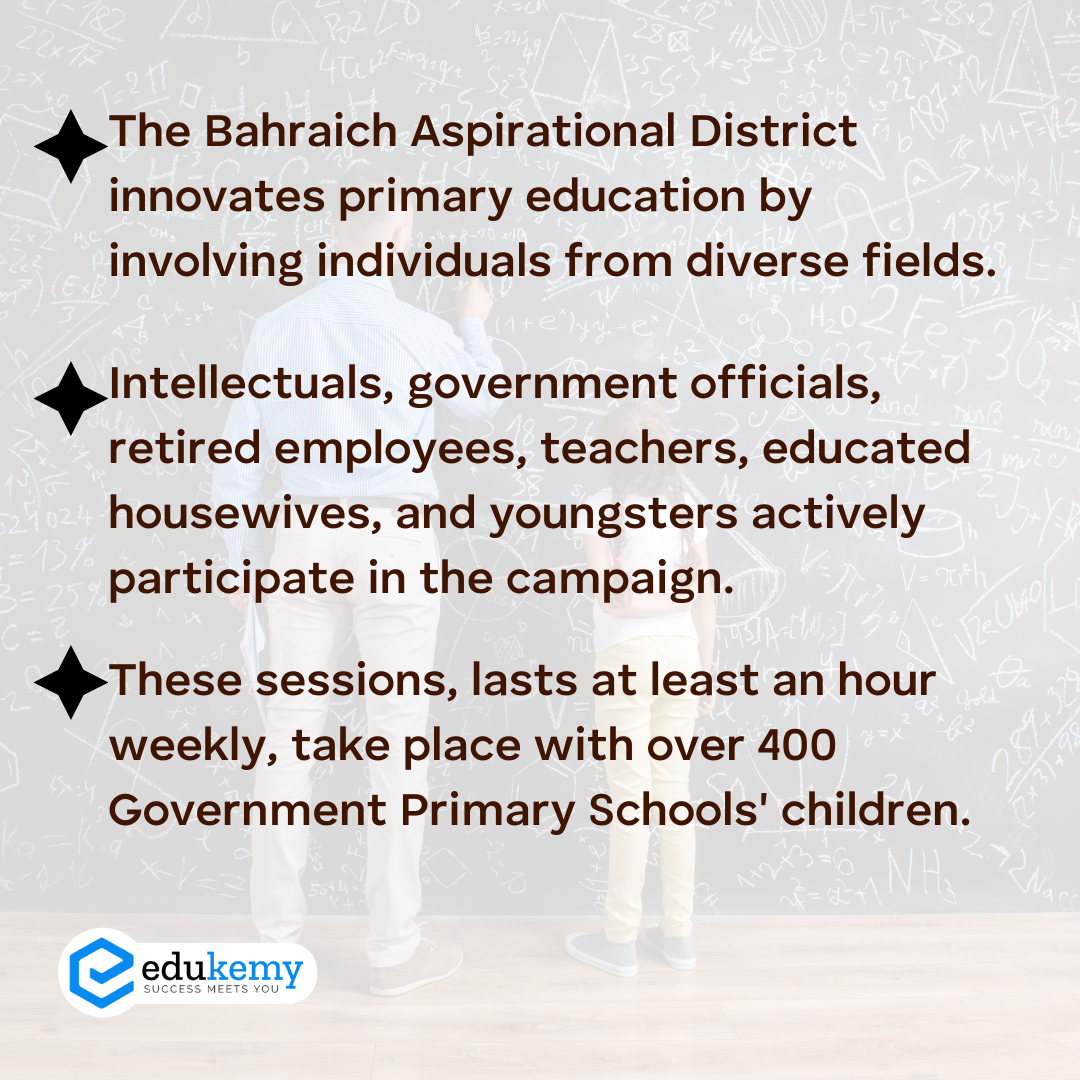
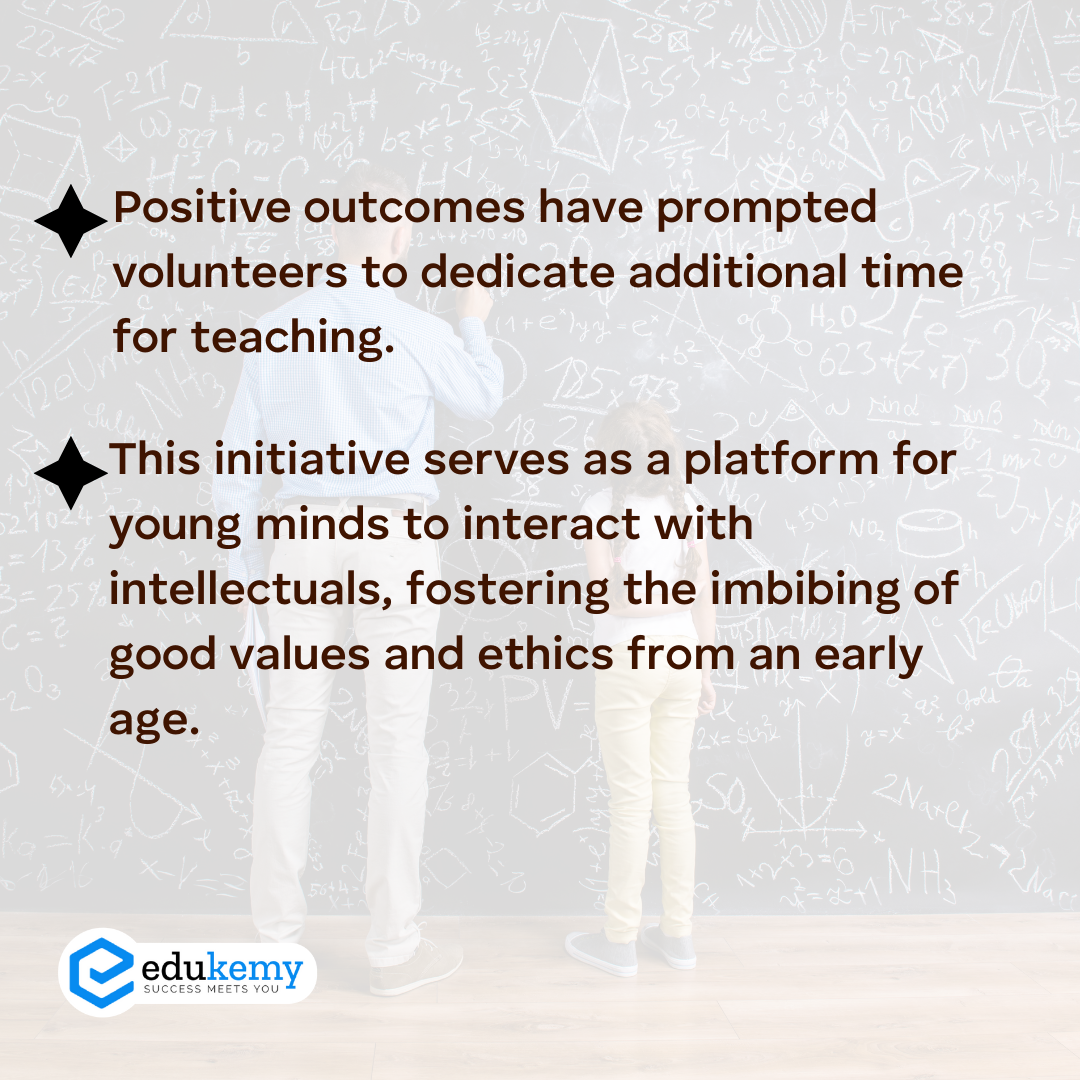
Share the article
Edukemy’s Current Affairs Quiz is published with multiple choice questions for UPSC exams
MCQ
Get Latest Updates on Offers, Event dates, and free Mentorship sessions.

Get in touch with our Expert Academic Counsellors 👋
FAQs
UPSC Daily Current Affairs focuses on learning current events on a daily basis. An aspirant needs to study regular and updated information about current events, news, and relevant topics that are important for UPSC aspirants. It covers national and international affairs, government policies, socio-economic issues, science and technology advancements, and more.
UPSC Daily Current Affairs provides aspirants with a concise and comprehensive overview of the latest happenings and developments across various fields. It helps aspirants stay updated with current affairs and provides them with valuable insights and analysis, which are essential for answering questions in the UPSC examinations. It enhances their knowledge, analytical skills, and ability to connect current affairs with the UPSC syllabus.
UPSC Daily Current Affairs covers a wide range of topics, including politics, economics, science and technology, environment, social issues, governance, international relations, and more. It offers news summaries, in-depth analyses, editorials, opinion pieces, and relevant study materials. It also provides practice questions and quizzes to help aspirants test their understanding of current affairs.
Edukemy's UPSC Daily Current Affairs can be accessed through:
- UPSC Daily Current Affairs can be accessed through Current Affairs tab at the top of the Main Page of Edukemy.
- Edukemy Mobile app: The Daily Current Affairs can also be access through Edukemy Mobile App.
- Social media: Follow Edukemy’s official social media accounts or pages that provide UPSC Daily Current Affairs updates, including Facebook, Twitter, or Telegram channels.

